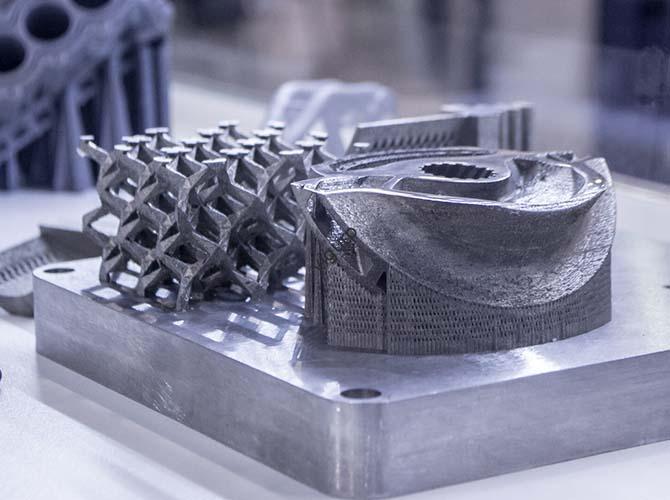Aluminum alloy die casting is widely used in industries like automotive, аэрокосмическая, и электроника, but raw castings often fail to meet strict performance requirements. Aluminum alloy die casting heat treatment solves this by precisely controlling heating and cooling processes to optimize material properties. This article breaks down its core purposes, методы, ключевые соображения, and practical applications to help you master this critical manufacturing step.
1. What Are the Core Purposes of Aluminum Alloy Die Casting Heat Treatment?
The primary goal of heat treatment is to address inherent flaws in raw castings and enhance their functionality. Below are the four key objectives, организовано приоритетом:
| Цель | Ключевое преимущество | Целевой сценарий |
| Eliminate internal stresses | Reduces cracking risk during machining or use | Castings with uneven wall thickness (НАПРИМЕР., двигатели кронштейны) |
| Improve mechanical properties | Повышает прочность на растяжение (к 20-40%), твердость, and plasticity | High-load parts (НАПРИМЕР., Королевки передачи) |
| Stabilize structure & размер | Prevents volume changes from high-temperature phase transitions | Точные компоненты (НАПРИМЕР., electronic sensor casings) |
| Optimize machining performance | Lowers cutting resistance, increasing tool life by 30%+ | Parts requiring complex CNC machining (НАПРИМЕР., Клапанские тела) |
2. What Are the Main Heat Treatment Methods for Aluminum Alloy Die Castings?
Different methods target specific property improvements. Below is a detailed comparison of the most widely used techniques, including the recommended T5 artificial aging процесс.
2.1 Key Heat Treatment Methods: Бок о бок сравнение
| Метод | Определение | Critical Parameters | Основные функции | Идеальные приложения |
| Отжиг | Heat to high temp (300-400° C.) + slow furnace cooling | Heating rate: 50-100°C/h; Время выдержки: 2-4час | Decomposes second-phase particles; reduces hardness | Pre-machining of hard castings (НАПРИМЕР., алюминий – silicon alloys) |
| Раствор лечение | Heat near eutectic melting point (450-550° C.) + rapid quenching | Temp < overburn temp; Quench transfer time < 10с | Maximizes dissolution of strengthening elements (НАПРИМЕР., Кузок, Мг); Улучшает коррозионную стойкость | Parts requiring high strength (НАПРИМЕР., aircraft fittings) |
| Aging Treatment | Post-solution heating to 120-200°C + heat preservation | Время выдержки: 4-12час; Метод охлаждения: Air/water | Promotes precipitation of strengthened phases; Balances strength and plasticity | Follow-up to solution treatment (НАПРИМЕР., Автомобильные структурные детали) |
| T5 Artificial Aging (Рекомендуется) | Low-temperature start → ramp to target temp (150-180° C.) + Воздушное охлаждение | Heating rate: 30-50°C/h; Время выдержки: 6-8час | Avoids high-temperature deformation/pore expansion; Lowers costs by 15-20% против. T6 | Complex thin-walled parts (НАПРИМЕР., smartphone midframes) or high-gas-content castings |
| Cold-Hot Cycle Treatment | 3-5 cycles of heating (200-300° C.) + охлаждение (-20 to 0°C) | Время цикла: 2-3h/cycle; Temperature variation: ±5°C | Stabilizes phase structure; Ensures dimensional accuracy (± 0,01 мм) | Ultra-precision parts (НАПРИМЕР., Компоненты медицинского устройства) |
3. What Critical Factors Must Be Controlled During Heat Treatment?
Even the best method fails without strict process control. Ниже 5 non-negotiable considerations, presented as a checklist for practical use:
3.1 Essential Control Factors
- Контроль температуры:
- Risk of too high: Overheating (grain growth) or deformation (до 5% отклонение размеров).
- Risk of too low: Failure to achieve desired strength (tensile strength may drop by 30%).
- Решение: Use digital thermostats with ±2°C accuracy.
- Time Management:
- Holding time depends on: Alloy type (НАПРИМЕР., Ал – Mg alloys need 2-3h; Ал – Cu alloys need 4-6h) and casting thickness (add 1h for every 10mm thickness).
- Consequence of mismatch: Too long → oxidation; Too short → incomplete phase transformation.
- Влажность & Atmosphere:
- Humidity limit: < 40% Раствор (to prevent oxidation and surface pitting).
- Protective atmosphere: Use nitrogen or argon (reduces surface defects by 80% против. air heating).
- Метод охлаждения:
- Quenching medium selection (based on part needs):
| Середина | Скорость охлаждения | Suitable Parts |
| Вода | Быстрый (100-150° C/с) | Высокопрочные детали (НАПРИМЕР., передачи) |
| Масло | Умеренный (20-50° C/с) | Parts sensitive to internal stress (НАПРИМЕР., thin plates) |
| Air | Медленный (5-10° C/с) | Low-deformation requirements (НАПРИМЕР., декоративные детали) |
- Material Adaptability:
- Different alloys respond differently:
- Ал – Si alloys: Excellent for annealing (улучшает механизм).
- Ал – Cu alloys: Require solution + старение (maximizes strength).
- Ал – Mg alloys: Avoid high-temperature solution treatment (risk of burning).
4. Yigu Technology’s Perspective on Aluminum Alloy Die Casting Heat Treatment
В Yigu Technology, Мы верим aluminum alloy die casting heat treatment is not just a “post-processing step” but a “design-in factor” Для высокопроизводительных деталей. Наш опыт показывает, что 70% of casting failures stem from mismatched heat treatment schemes—for example, using T6 treatment on thin-walled parts often causes warping, while T5 can reduce this risk by 90%.
We recommend integrating heat treatment requirements into the early design stage: Для сложных частей, simulate stress distribution first to select methods like T5 or cold-hot cycling; for corrosion-sensitive parts, combine solution treatment with a protective atmosphere. By balancing process efficiency and performance goals, we help customers cut costs by 15-25% while improving part lifespan by 2-3x.
5. Часто задаваемые вопросы: Common Questions About Aluminum Alloy Die Casting Heat Treatment
1 квартал: Can all aluminum alloy die castings be heat-treated?
Нет. Например, high-silicon aluminum alloys (Si content > 12%) have limited response to solution/aging treatment, so annealing is preferred. Always check the alloy’s chemical composition first.
2 квартал: How does T5 treatment compare to the traditional T6 process?
T6 (решение + full artificial aging) offers higher strength but risks deformation. T5 (direct artificial aging) is simpler, дешевле, and better for thin-walled/complex parts—though its tensile strength is 5-10% lower than T6.
Q3: What should I do if a casting cracks after heat treatment?
Первый, check if the quenching transfer time was too long (causing precipitation) or if the cooling medium was too fast (inducing stress). Adjust parameters: Extend holding time by 1h or switch to a slower cooling medium (НАПРИМЕР., from water to oil).
